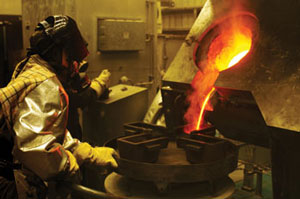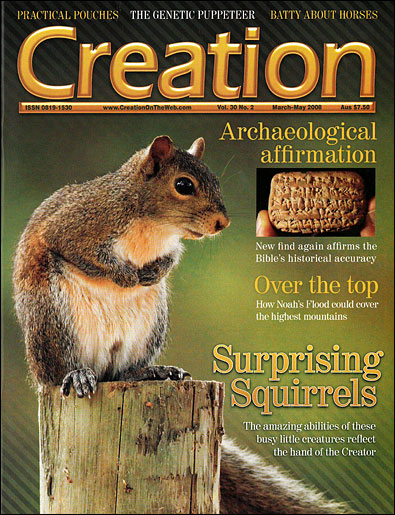Liquid Gold
The home of one of the biggest gold mines in the world, a Pacific volcanic island, is challenging the way geologists think about history’s most coveted metal. Before now, geologists outside creationist circles believed that gold deposits only form over long periods of time, perhaps hundreds of thousands to millions of years. The Lihir gold deposit in Papua New Guinea is quickly changing that.

The island of Lihir is only a few miles long but sits on one of the most massive gold deposits known, the Ladolam deposit.1 This formed below-ground as magma (molten rock) heated mineral-rich water and forced the water under great pressure toward the surface. Inside the earth, these chemically aggressive solutions are able to dissolve all sorts of minerals. Approaching the surface, the water turned to steam, leaving behind its minerals, including the gold. Some geologists think many of the world’s gold ore deposits formed in this way.2

But did they form quickly or slowly? Quickly, say the authors of a paper published in the journal Science last year.3 Two New Zealand geologists, Stuart Sim mons and Kevin Brown, obtained a water sample from below Lihir mine by lowering a customized probe down a deep shaft. The concentration of gold dissolved in the water was 15 parts per billion—seemingly small but 1,000 times greater than any concentration ever measured in hydrothermal surface water.4 Calculating the rate at which the steam was escaping, Simmons and Brown estimated that 24 kilograms (53 pounds) of gold are being added to the Ladolam deposit every year. They concluded the entire deposit could have been laid down in only 55,000 years. That’s extremely quickly by secular, uniformitarian standards. But that’s also assuming the rate has never changed.
In January 2007, New Scientist quoted two other researchers who think the Ladolam deposit was formed even more speedily, either because of higher concentrations of gold or as the result of a cataclysmic event.5 Christoph Heinrich, a Swiss researcher who has studied gold deposits around the world, says he has found fluids locked in quartz crystals with concentrations 1,000 times higher than even what Simmons and Brown found. ‘If you spin the same argument that they are using with a thousand times higher concentrations, then the time it takes might have been a thousand times shorter—50 or 60 years,’ he said.

Greg Hall, a geologist who has worked for the mining company Placer Dome, told New Scientist, ‘My gut feeling looking at Lihir is that it formed in the same time it took Mount St Helens to blow up—a month, a day, maybe as short as 5 hours.’ Mount St Helens erupted in 1980 and immediately became a working example of immense geologic change occurring in a short timeframe. Lihir, as a volcanic island, has been subject to similar processes.
Creationists have a biblical explanation for these processes. The Bible clearly teaches that a global Flood covered the earth in Noah’s day, a few thousand years ago, breaking up ‘the fountains of the great deep’.6 Such a powerful event would have triggered immediate and ongoing volcanic activity throughout the earth. It would have been during this time, and afterwards, that many gold deposits formed, including the Ladolam deposit.
As scientists learn more about the earth, it becomes increasingly clear that long-age theories don’t always hold ‘flood water’. Instead, we’re finding that the Creator’s Book was accurate all along.
References
- McKenna, P., Gold, New Scientist 193(2587):32, 20 January 2007. Return to text.
- Gramling, C., Gold mine deposited rapidly, Geotimes, December 2006, <www.geotimes.org/dec06/NN_gold.html>, 7 May 2007. Return to text.
- Simmons, S. and Brown, K., Gold in magmatic hydrothermal solutions and the rapid formation of giant ore deposit, Science 314(5797):288–291, 13 October 2006. Return to text.
- Ref. 1, p. 32. Return to text.
- Ref. 1, p. 33. Return to text.
- Genesis 7:11. Return to text.


Readers’ comments
Comments are automatically closed 14 days after publication.